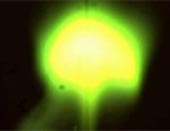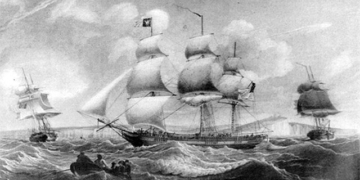Ball lightning – mysterious, glowing fireballs that move slowly and are often seen during thunderstorms – have been created in the laboratory of the Max Planck Institute for Plasma Physics in Germany.
Researchers from the Max Planck Institute and Humboldt University in Berlin have exploited the phenomenon of underwater discharge to generate bright plasma clouds similar to ball lightning, which last for nearly half a second and can have a diameter of up to 20 centimeters.
 |
|
Despite their bright appearance, these fireballs seem to be quite cold and do not ignite paper. (Photo: Max Planck Institute for Plasma Physics) |
They hope these artificial entities will enhance understanding of this strange phenomenon and perhaps shed new light on the use of hot plasmas for nuclear fusion power plants.
Ball lightning has puzzled scientists for centuries. Although authentic data about them is scarce, there are many anecdotes about this mystical phenomenon, with famous witnesses including Charlemagne, Henry II, and physicist Niels Bohr.
Most descriptions suggest that ball lightning usually moves relatively slowly in the air, at the speed of a running person, lasting a few seconds and, in rare cases, up to several minutes. Its path aligns with the direction of the wind. Sometimes, the fireball appears to come to a complete stop. When it moves, a faint hissing or crackling sound can occasionally be heard. The colors of ball lightning vary significantly: bright red, yellow, dazzling white, and dark blue have all been observed. As for size? Typically, ball lightning does not exceed 20 cm in diameter.
Many scientists believe that ball lightning is a plasma sphere formed when lightning strikes the ground, but the actual mechanism remains a mystery despite numerous hypotheses proposed.
Earlier this year, Israeli scientists created plasma balls using microwaves to vaporize various materials, but Gerd Fussmann and his colleagues from the Max Planck Institute employed a different technique that they believe is closer to the natural phenomenon.
“It is possible that lightning interacts with water to create ball lightning,” Fussmann stated, “Therefore, we use a fast discharge stream with a high voltage of up to 5,000 volts to vaporize a small amount of water in a glass tank and create a plasma ball.”
This glass tank contains two electrodes, with one electrode isolated from the surrounding water by a clay tube. The high voltage generates a massive current of up to 60 amps – 200 times greater than the current necessary to be lethal – flowing through the water for a fraction of a second. This current flows into the clay tube, causing the water there to vaporize, and a brilliant plasma ball – composed of ionized water molecules – rises from the surface.
“This ball lasts up to 0.3 seconds after the current is switched off – much longer than typical plasma, which disintegrates very quickly,” Fussmann explained. Plasma used in laboratories and fusion power plants usually degrades within a few thousandths of a second after the power source is turned off.
Despite glowing brightly, these balls seem quite cold, resembling the light of neon lamps. A piece of paper placed above them is lifted but does not catch fire.
Fussmann is currently examining the spectrum emitted from the light of these fireballs and plans to investigate whether their size and lifespan are affected by the magnitude of the current.
To accurately determine what happens when ball lightning occurs in nature, he hopes to compare the characteristics of artificial “ball lightning” with existing theories about their origin.
T. An


















































